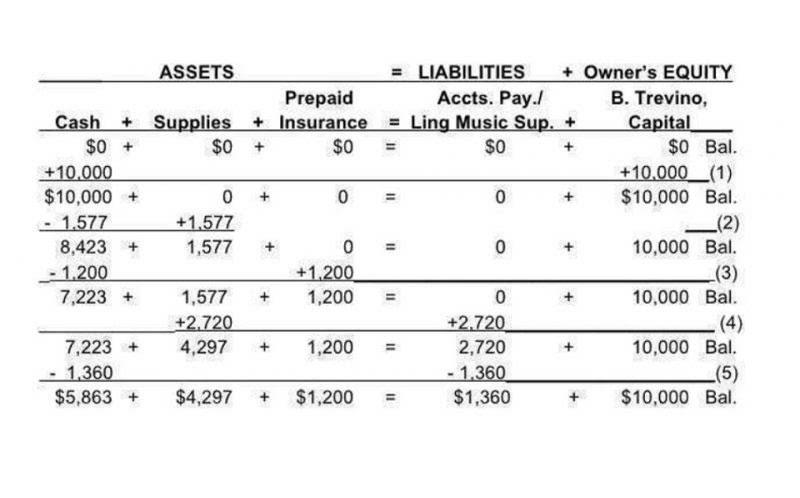
However, using the average balance creates the need for more historical reference data.

Evaluate Credit Terms
The average collection period is the average number of days it takes for a credit sale to be collected. While a shorter average collection period is often better, too strict of credit terms may scare customers away. the formula for average collection period is As noted above, the average collection period is calculated by dividing the average balance of AR by total net credit sales for the period, then multiplying the quotient by the number of days in the period.
Liquidity and Working Capital
Even though a lower average collection period indicates faster payment collections, it isn’t always favorable. If customers feel that your credit terms are a bit too restrictive for their needs, it may impact your sales. Calculating the average collection period with average accounts receivable and total credit sales. 💡 You can also use the same method to calculate your average collection period for a particular day by dividing your average amount of receivables by your total credit sales of that day.
- Consequentially, it may result in slower growth and potentially missed market opportunities.
- Businesses today are highly reliant on credit during their day-to-day business transactions.
- For example, the banking sector relies heavily on receivables because of the loans and mortgages that it offers to consumers.
- Charging fair interest rates, offering reasonable payment periods and understanding financial situations are all significant aspects of this.
- The company’s top management requests the accountant to find out the company’s collection period in the current scenario.
Capital Rationing: How Companies Manage Limited Resources

In the next part of our exercise, we’ll calculate the average collection period under the alternative approach of dividing the receivables turnover by the number of days in a year. In order to calculate the average collection period, the company’s accounts receivable (A/R) carrying values from its balance sheet are needed along with its revenue in the corresponding period. The best way that a company can benefit is by consistently calculating its average collection period and using it over time to search for trends within its own business.
This metric should exclude cash sales (as those are not made on credit and therefore do not have a collection period). On the reputational front, consistently slow receivable collection may signal financial instability or poor credit management to stakeholders, including investors, lenders, and credit rating agencies. This could potentially result in more restrictive credit terms from suppliers, higher interest rates on loans, and a lower credit rating, further impacting the financial position of the company.
- As noted above, the average collection period is calculated by dividing the average balance of AR by total net credit sales for the period, then multiplying the quotient by the number of days in the period.
- The ACP figure is also a good way to help businesses prepare an effective financial plan.
- Conversely, the retail industry normally sees a shorter collection period as customers typically pay for goods and services at the point of sale.
- Working capital is the difference between a company’s current assets (such as cash, accounts receivable, and inventory) and current liabilities (like accounts payable, accrued expenses, and short-term debt).
- So, in this line of work, it’s best to bill customers at suitable intervals while keeping an eye on average sales.
Customers who don’t find their creditors’ terms very friendly may choose to seek suppliers or service providers with more lenient payment terms. Timely follow-ups on outstanding invoices can also enhance your average collection period. Regular reminders to customers about their due payments https://www.bookstime.com/ can prevent past-due accounts from extending too far beyond their due dates. A lower DSO reflects a shorter time to collect receivables, indicating better business operation. However, a higher DSO may suggest problems in the company’s collection processes or credit policies.
Average collection period is a company’s average time to convert its trade receivables into cash. It can be calculated by dividing 365 (days) by the accounts receivable turnover ratio or average accounts receivable per day divided by average credit sales per day. The average collection period is an important accounting metric that evaluates a company’s ability to manage its accounts receivable (AR) effectively. It measures the time it takes for the business to collect payments from its clients, which reflects its cash flow effectiveness and ability to meet short-term financial obligations. The average collection period is calculated by dividing the net credit sales by the average accounts receivable, which gives the Accounts receivable turnover ratio.
Impact on Cash Flow and Liquidity
If you have a low average collection period, customers take a shorter time to pay their bills. Using those hypotheticals, we can now calculate the average collection period by dividing A/ R by the net credit deals in the matching period and multiplying by 365 days. It may mean that your business isn’t efficient enough when it comes to staying on top of collecting its accounts receivable. However, it can also show that your credit policy is one that offers more flexible credit terms. The ACP is a calculation of the average number of days between the date credit sales are made, and the date that the buyer pays their obligation.
Free Financial Modeling Lessons

